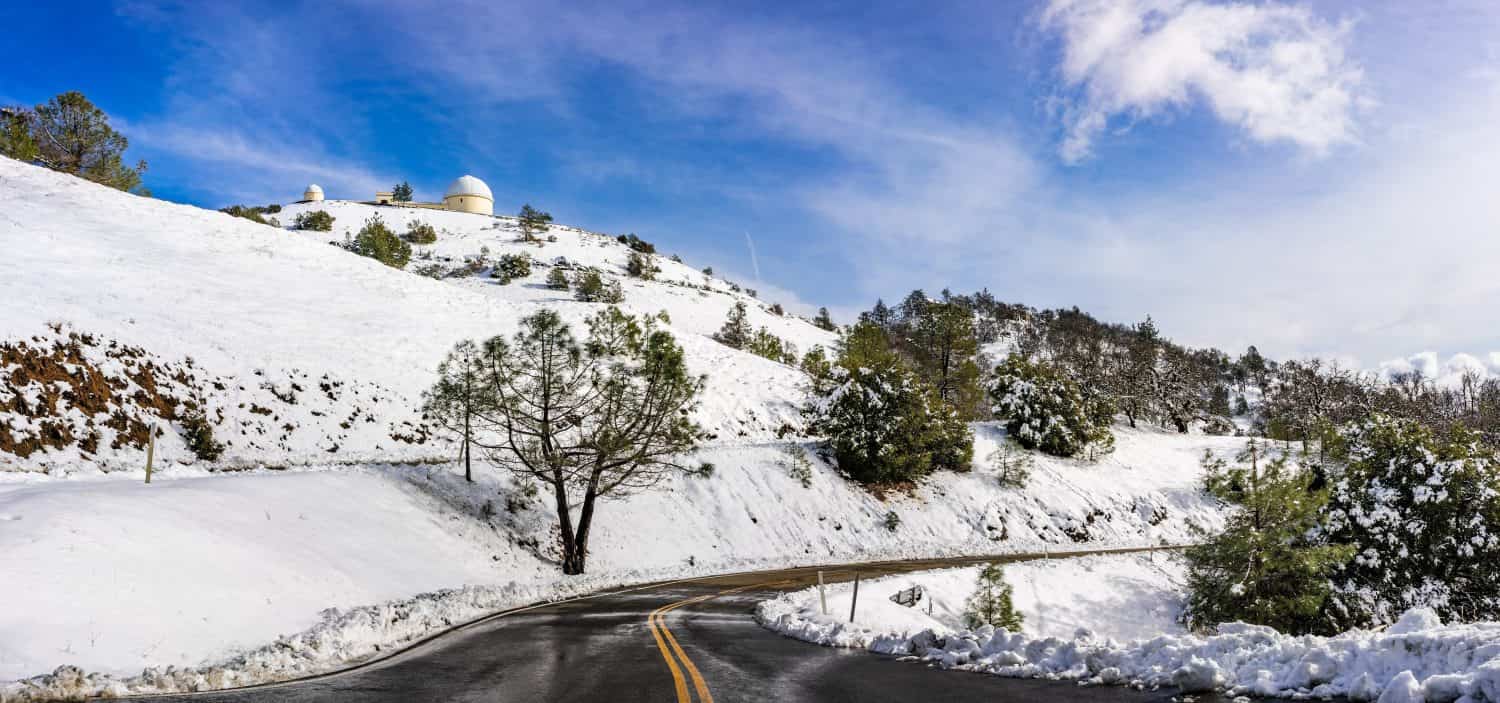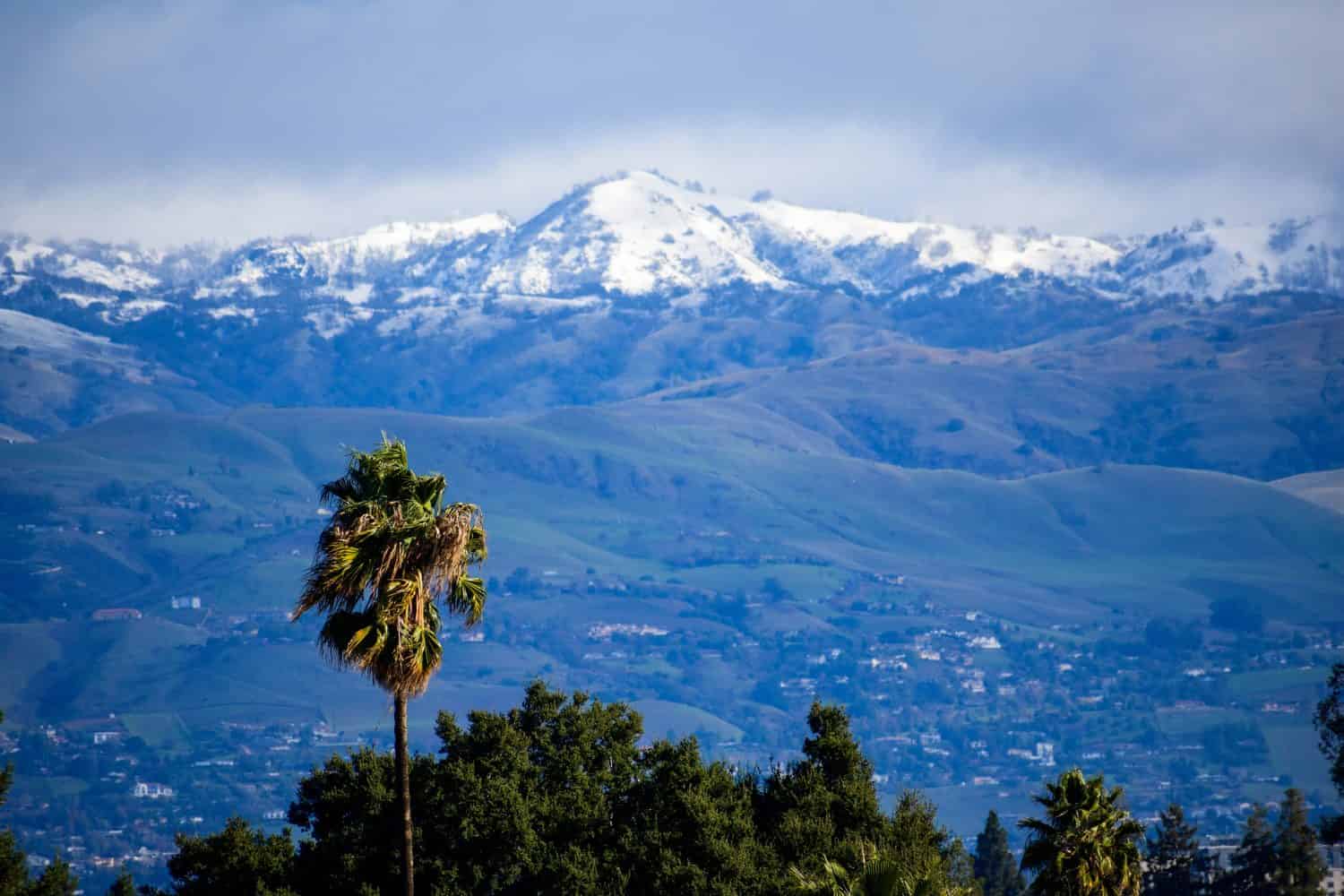San Francisco, California maintains nearly uniform temperatures all year round. Bounded by the warm Pacific Ocean on the west, and the San Francisco Bay on the east, the city of San Francisco is essentially a temperate paradise, at least concerning its weather. San Francisco has average highs ranging from about 58 degrees Fahrenheit in the winter to the low 70s in the summer. Lows range from the upper 40s to the middle 50s. But does it ever snow? Yes, it snows in San Francisco, but so rarely that many residents alive today have never seen it happen.
Snow Usually Misses San Francisco
In late February 2023, storms dropped a whopping 17 inches of snow over parts of California. Heavy snows blanketed the San Bernardino Mountains near Los Angeles, and measurable snow fell on many areas in the San Francisco Bay area. However, according to the National Weather Service, the snow missed the city of San Francisco itself. Snow usually misses the city of San Francisco, instead falling on the mountains to the east, or to the north or south of the bay area.
Residents Can Sometimes See Snow

Snow that falls in higher elevations can sometimes be visible in the San Francisco area.
©DFTidrington/iStock via Getty Images
Much like what happens in Hawaii, snow generally falls at higher elevations in the areas around San Francisco Bay. It seldom falls at the lower elevations where the city of San Francisco lies. The residents of San Francisco can sometimes see snow if they look to the east across the bay. Mount Diablo stands more than 3,800 feet above sea level. In 2023, the mountain received close to an inch of snow at upper elevations. The snow was visible from sites around the San Francisco Bay, including San Francisco itself.
Recorded Snowfall in San Francisco
Measurable snow has fallen just five times in the city of San Francisco since recording began. The first occurrence happened in December 1882. In February 1887, the largest snowfall ever recorded in the city left several inches of snow in different parts of town. It didn’t snow enough to accumulate again until 64 years later, in February 1951. Snow fell again in January 1962, and most recently, in February 1976.
Perhaps by 1976. People started to get used to the once-per-decade snowfalls in the city. San Francisco got three such storms in a row, Children of the 50s, 60s, and 70s all got a chance to make snowballs and frolic in the snow, at least for a little while, before it melted away. San Francisco kids in the 80s and beyond made no such memories, unless they left the city and went to the nearby mountains or snowy areas farther away.
Snowy Escapes

Mount Hamilton, a peak southeast of the San Francisco Bay, occasionally gets snow.
©Sundry Photography/Shutterstock.com
Several low to medium-sized peaks lie around the San Francisco Bay area, ranging from about 900 to more than 4,000 feet in height. Sometimes these peaks, including Mount Diablo to the east of the city, and Mount Hamilton and Mount Umunhum, both to the south of the bay, get measurable snowfall in the winter. Residents of San Franciso with access to transportation can get to these areas pretty easily to enjoy fun in the snow when it happens.
Further away, in the Sierra Nevada range, taller peaks include a number of California’s SNO-Park facilities. These parks, run by the state of California in conjunction with the U.S. Forest Service, provide lots of winter recreation opportunities with ample snow. Private ski resorts also provide simple to luxurious snowy getaways for San Francisco residents who can afford to partake in such leisure.
What Climate Change Might Mean
Experts note that annual precipitation, including snowfall, around the San Francisco Bay area could increase slightly in the coming years with the effects of climate change. The snowpack recorded in early 2023 in parts of California was the largest on record. San Francisco itself may not be receiving more snow, but the city could be in for additional rain. The area has swung back and forth from periods of extreme dryness to extreme precipitation, and those who study the climate expect that trend to continue.
San Francisco Snow by the Month
When snow has only accumulated in a city five times in recorded history, determining the snowiest month of the year proves easy. February is San Francisco’s snowiest month of the year, having had three occurrences, as opposed to just one in any other month. Here is a chart to see the historical snowfalls in San Diego, broken down by months.
| Month | Snow Occurrence(s) |
|---|---|
| December | 1882 |
| January | 1962 |
| February | 1887, 1951, 1976 |
Thank you for reading! Have some feedback for us? Contact the AZ Animals editorial team.








